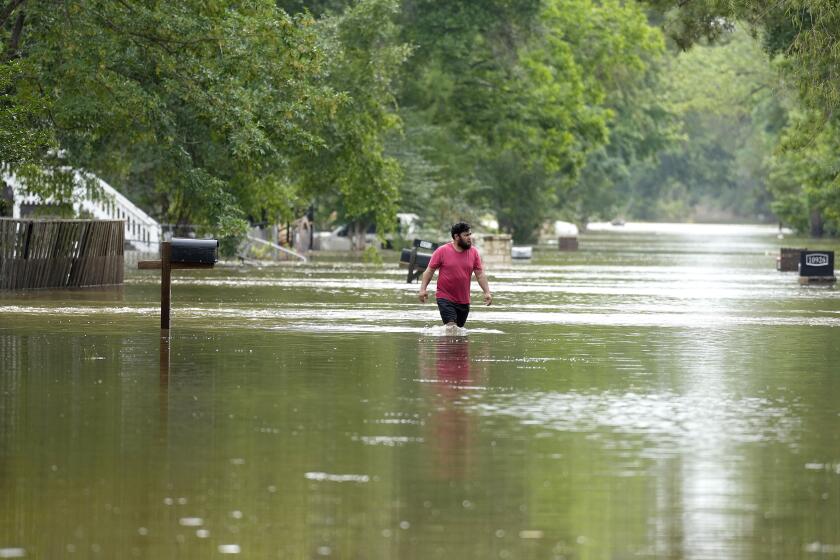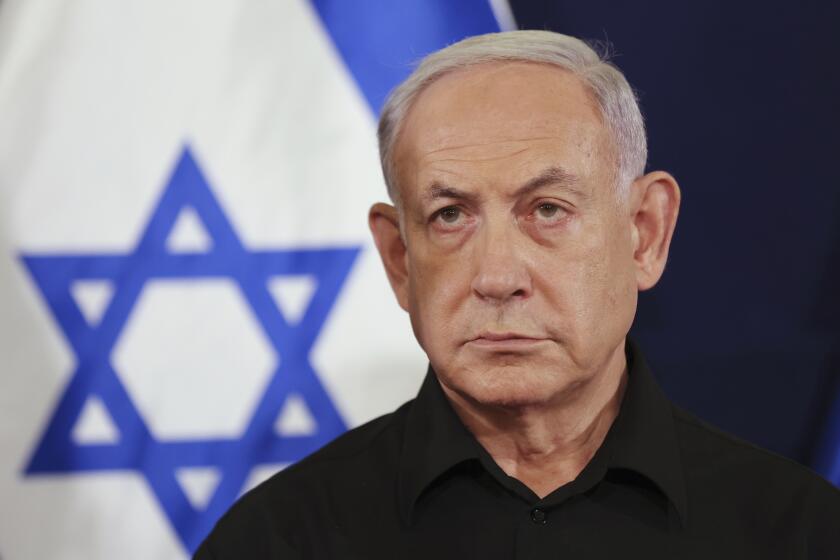Anniversary Lifts Off Engineers’ Memories
It was July 20, 1969, and engineer Bill Biggs stood at an expansive window at Cape Kennedy as Apollo 11 was about to lift off. The blast was so powerful, the heavy pane shook and Biggs could feel the explosion “rattle my ribs.”
With 500 million people around the world sitting mesmerized in front of their TVs, Apollo 11 shot toward the moon, where astronaut Neil Armstrong would make his “giant leap for mankind.”
For the record:
12:00 a.m. July 22, 2004 For The Record
Los Angeles Times Thursday July 22, 2004 Home Edition Main News Part A Page 2 National Desk 1 inches; 42 words Type of Material: Correction
Moon launch -- An article in Wednesday’s California section about the 35th anniversary of the Apollo 11 space mission reported the launch date as July 20, 1969. The launch took place July 16, 1969, and the moon landing occurred July 20, 1969.
As development project engineer for the F-1 engine -- which provided the main thrust of the Saturn V rocket that propelled Apollo 11 into the stratosphere -- Biggs had a lot riding on the launch. And so did the United States in its frantic space race with the former Soviet Union.
On Tuesday, the 35th anniversary of the launch, Biggs and two other engineers who worked on the Apollo 11 mission gathered at Boeing’s Rocketdyne plant in Canoga Park to talk about the historic day and the impact it had on their lives.
“I wish I could say I was completely confident that everything would work out,” said Biggs, 70, of Westlake Village. “But I had some worries. I was happy it turned out the way it did.”
So were Paul Coffman, 69, of West Hills, who helped develop the J-2 engines that comprised the second stage of the Saturn V, and Tim Harmon, 64, of Thousand Oaks, who worked on the ascent engines that would carry the astronauts and their lunar module, Eagle, off the moon.
“I was extremely nervous,” Harmon said.
Since his family didn’t own a television, Harmon packed up his wife and children and took them to a motel, where they watched the moon launch from a TV in one of the rooms. “The reception wasn’t that good, “ Harmon recalled, “but I saw it.”
When Harmon was a teenager, Armstrong paid a visit to his house. The future astronaut was a college friend of Harmon’s brother, Quinn, who brought Armstrong home one day and the two briefly exchanged greetings. Harmon said it was a funny coincidence that years later he would be working to find a way to get Armstrong off the moon and back to Earth.
“I never spoke to him [Armstrong] after that,” Harmon said.
All three engineers said working on the Apollo mission was the highlight of their careers. Without computers to assist them, they used slide rules and adding machines to make their calculations. They toiled amid the height of the Cold War as the United States raced against the Soviet Union to reach the moon first. President Kennedy had set a deadline to achieve the goal before the decade was over. Money was no object.
The quest put aerospace giants throughout Southern California into overdrive. The Apollo program cost about $25 billion, or $150 billion in today’s dollars, and employed 400,000 workers at 20,000 companies across the nation. Engineers and technicians at Rocketdyne’s Santa Susana Field Laboratory near Simi Valley worked six days a week. Three shifts were scheduled at the lab site -- then owned and run by Rockwell International -- to keep up with the pace, they said.
“It was exciting and fun, and a hell of a lot of pressure,” Biggs said. “It was the height of the Cold War-fighting with Russia, and that was ever-present in our minds.”
Older and grayer, the three engineers still work at Rocketdyne.
Although they lament that Americans no longer seem as interested in space exploration as they were three decades ago, they are excited by the prospect of working on President Bush’s new initiative to create a permanent base on the moon by 2020 for use as a steppingstone for sending astronauts to Mars.
“We’ll go back to the moon,” Coffman said. “In order to get to Mars, we have to return to the moon.”
More to Read
Start your day right
Sign up for Essential California for news, features and recommendations from the L.A. Times and beyond in your inbox six days a week.
You may occasionally receive promotional content from the Los Angeles Times.






